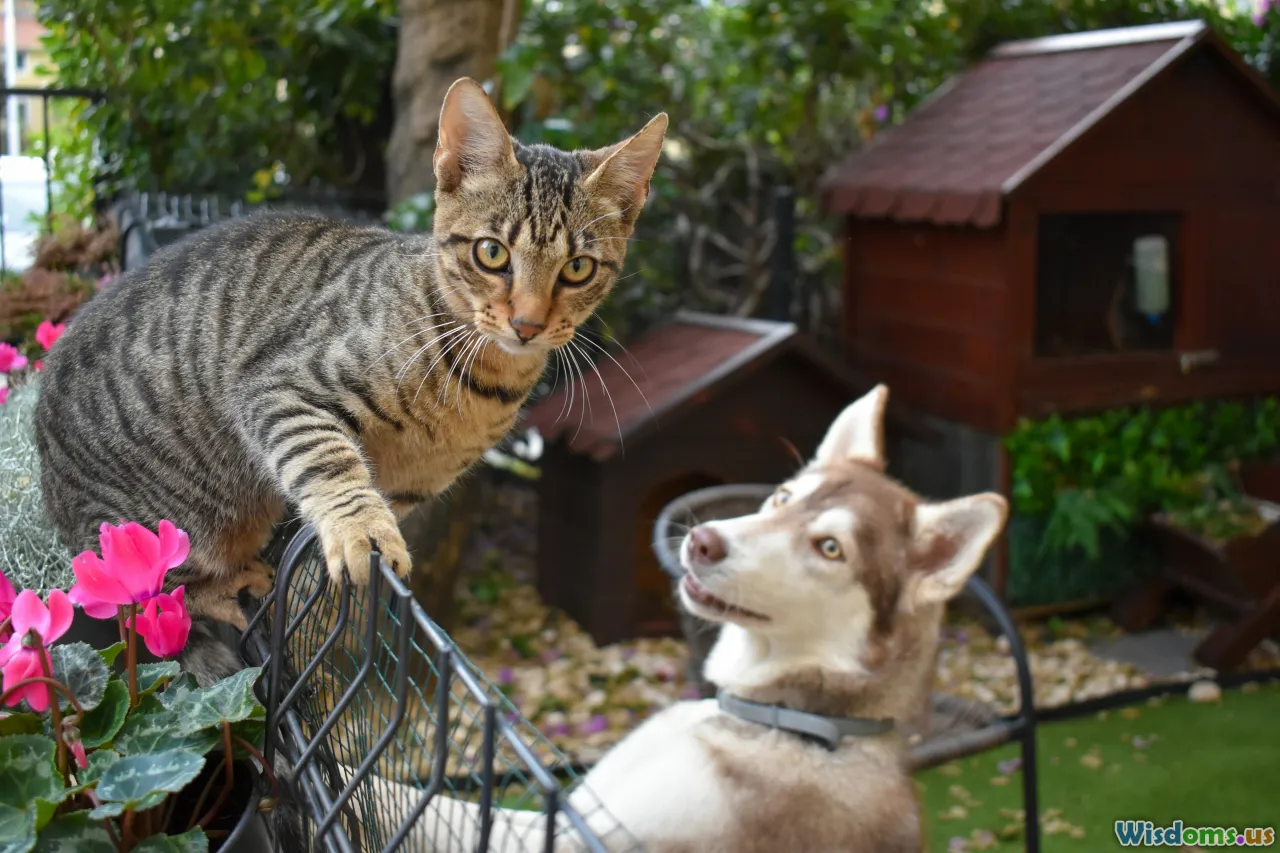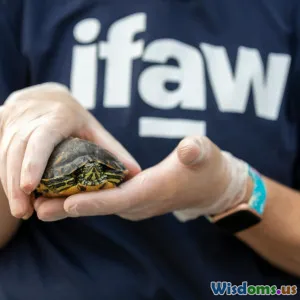
What Data Shows About The Most Adoptable Animal Breeds
18 min read Explore data-driven insights into the most adoptable animal breeds and the factors influencing their adoption rates. (0 Reviews)
What Data Shows About The Most Adoptable Animal Breeds
When searching for a new furry companion, prospective pet owners often wonder which animal breeds are most likely to find loving homes. Shelters and rescue organizations track adoption trends extensively, examining not just numbers, but patterns in breed preferences, age, temperament, and even social media perceptions. This article explores what the latest data reveals about the most adoptable breeds and the factors influencing their popularity.
Breed Popularity: A Numbers Game

Animal shelter databases, such as Petfinder and the ASPCA's adoption portal, provide valuable adoption statistics across the United States. According to a 2023 ASPCA report, certain dog and cat breeds consistently top the list of most adopted animals.
Dogs: America's Top Choices
Across the nation, mixed breed dogs with a recognizable "type" often lead in adoption rates. Labrador Retrievers, for example, have held the title of 'America's Favorite Dog' by the American Kennel Club for over three decades. Their friendly nature and adaptability make Lab mixes especially popular in shelters.
Other frequently adopted dog breeds include:
- Beagles: Known for their manageable size and sociable temperament.
- German Shepherds: Recognized for intelligence and protective instincts, though often adopted more for families seeking active lifestyles.
- Terrier mixes: Especially those with traceable lineage, such as Jack Russell or Yorkie mixes, which score highly for energy and playfulness.
A 2021 PetFinder analysis of over 500,000 successful dog adoptions found the following adoption rates for the most popular breeds:
| Breed | % Adopted within 1 Month of Intake |
|---|---|
| Labrador Retriever Mix | 72% |
| Beagle | 69% |
| Terrier Mix | 66% |
| Chihuahua Mix | 61% |
| German Shepherd | 58% |
Cats: Preferences Reflect Personality
On the feline side, adoption trends are also apparent. Domestic Shorthairs (commonly known as "tabbies") see the fastest placement in homes, followed by Siamese mixes, Maine Coons, and Russian Blue mixes. American Society for the Prevention of Cruelty to Animals (ASPCA) surveys consistently show that distinct markings (like tuxedo or calico coats) help cats stand out and increase their adoptability.
Age Matters: Why Puppies and Kittens Get Snapped Up First

Data overwhelmingly demonstrates that young animals have the highest adoption rates. In a 2022 Maddie's Fund national survey:
- Nearly 80% of puppies and kittens are adopted within two weeks of arriving at a shelter.
- Adult animals: Average a 6-10 week wait for adoption.
- Senior animals: Often wait several months, and are most at risk for extended shelter stays.
Why the Youth Bias?
Puppies and kittens appeal due to their perceived cuteness and the opportunity for owners to shape their upbringing. Many adopters express concern about "behavioral baggage" in adult or senior animals, even though data and shelter staff highlight the benefits of rescues of all ages. Many mature pets have lower energy needs, are house-trained, and show consistent temperaments.
Shifting the Narrative
Several initiatives aim to spotlight adult and senior pets:
- Adopt-a-Senior-Pet Month: Programming has increased adoptions of older animals by 12% during the campaign month according to Best Friends Animal Society data.
- Fee-waived events: Remove barriers for hesitant adopters and normalize bringing home mature animals.
The Impact of Size and Appearance

Size matters—especially for city dwellers. Small breeds and mixes see higher adoption turnover in urban shelters, reflecting space limitations in apartments. For example, French Bulldogs, Miniature Schnauzers, and Dachshunds experience wait times less than half that of larger breeds such as Great Danes or Mastiffs.
Uniqueness and the "Cute Factor"
A 2020 University of Florida study found that animals with unique physical traits—such as heterochromia (different colored eyes), distinctive coats (brindle, merle), or especially photogenic faces—garner increased adoption interest due to their shareability on social media. Rescue groups often leverage these traits by featuring them on Instagram or TikTok, directly leading to "viral" adoptions.
Example:
A shelter in California featured a dog with a heart-shaped mark on his chest. After a TikTok video of him gained 500,000 views, the pup was adopted within 24 hours by a family from another state.
Mixed Breeds vs. Purebreds: Debunking Myths

A persistent myth is that purebred animals are more adoptable. In reality, multiple data sets reveal mixed breeds are the backbone of shelter adoption success. The Shelter Animals Count 2023 survey showed approximately 84% of dogs and 94% of cats in shelters were either mixed breed or unknown ancestry, comprising over 90% of all adoptions.
Why Are Mixed Breeds Popular?
- Perceived health advantages: Mixed breeds are often believed to have fewer inherited health issues.
- Unique personalities and appearances: Adopters sometimes seek pets that stand out.
- Flexible adoption criteria: Many rescue organizations prioritize potential over pedigree.
Notably, certain shelters now have "Meet the Mutts" days, emphasizing that every dog's uniqueness is a selling point for families searching for something one-of-a-kind.
Personality Traits: The Unsung Hero

Breed is only one facet of adoptability. Data-driven behavioral assessments, such as those conducted using the ASPCA's Meet Your Match™ program, have shown that personality compatibility matters at least as much as physical appearance.
Matching Process in Action
Shelters now routinely assess animals for friendliness, sociability, and adaptability. A dog labeled as social and outgoing has a 32% higher chance of adoption in the first weeks, regardless of breed, compared to those lacking assessment profiles.
For example:
- Friendly, playful cats with outgoing bios were adopted 2x faster than shy cats, even when they were the same color and age.
- Dogs described as "laidback" or "good with children" were often adopted sooner than energetic breeds when matched with families.
Stories that Sell
Shelters that highlight animals' personal stories, quirks, or photos of them interacting joyfully with staff and volunteers report substantial upticks in adoption rates. Narrative-driven listings, especially those paired with engaging visuals, help animals stand out in crowded adoption feeds.
The Influence of Bans and Breed Stigma

Some breeds face challenges to adoptability not because of their personal qualities, but due to negative stereotypes or legal obstacles.
Breed-Specific Legislation and Its Effects
Laws prohibiting or restricting "bully breeds"—including Pit Bulls, Staffordshire Terriers, and some Mastiffs—are prominent in many U.S. municipalities. As a result, these breeds often stay in shelters longer. According to data aggregated by the National Canine Research Council:
- Pit Bull-style dogs average stay: 41 days
- All other breeds average stay: 18 days
Studies confirm no direct link between breed and aggression, but the stigma persists, creating additional hurdles for these often affectionate and trainable dogs.
Fighting the Stereotype
Many shelters now launch targeted campaigns:
- "Pittie Pal Days" encourage families to interact with Pit Bull-type dogs in fun, family-friendly settings.
- Behavior assessment results prominently posted to showcase individual personalities.
Result: When breed-neutral policies are adopted and individual assessments prioritized, adoption rates for "stigmatized" breeds improve significantly.
Color Coats and the "Black Dog Syndrome"

A curious phenomenon documented by shelter workers is "Black Dog Syndrome," the apparent tendency for black-coated dogs and cats to be overlooked by potential adopters. Studies from the Journal of Applied Animal Welfare Science (JAAWS) reveal black dogs and cats linger up to 48% longer in shelters compared to lighter-colored counterparts.
Tackling Color-Based Bias
To combat this phenomenon, some shelters:
- Professional photo shoots: High-quality images increase visibility and make animals stand out.
- Themed events: "Midnight Pet Adoption Specials" offer reduced fees for black-coated animals, with data showing a 30% spike in adoptions during such campaigns.
- Educational campaigns: Dispel myths (such as black cats being bad luck) and spotlight the lovable personalities beneath the fur color.
Beyond the Numbers: Regional and Cultural Influences

Adoptability is also influenced by geography and local culture.
- Urban areas: Smaller breeds favored due to apartment living trends and busy lifestyles.
- Rural areas: Large, working breeds such as Collies and Huskies are more likely to be adopted, especially in agricultural communities.
Social norms play a role too:
- Coastal cities report high adoption numbers of hypoallergenic breeds, reflecting environmental and allergy concerns.
- Southern states see high demand for "family-friendly" Bulldogs and hound mixes, tied to regional culture and tradition.
Case Study: The Midwest phenomenon
Rescues in Chicago documented a sharp uptick in Chihuahua and Chihuahua-mix adoptions in 2023 following viral campaigns featuring the tiny but spirited canines. This demonstrates how cultural appreciation and targeted storytelling drive regional success.
Technology and Social Media: Shaping What Gets Adopted

The digital age has transformed the way people discover and adopt pets. Data from Adopt-a-Pet.com shows that over 68% of adopters in 2022 started their search online. Shelters leveraging efficient pet portals, quality photos, and engaging animal bios see the greatest success.
Social Media's Multi-Faceted Influence
- Viral stories: Have directly resulted in thousands of cross-country adoptions, sometimes for animals facing dire circumstances or long shelter stays.
- Influencer partnerships: Raise awareness and dispel breed stereotypes.
- Community building: Facebook, Instagram Reels, and TikTok allow shelters to keep in touch post-adoption, increasing future adoption rates by building community and trust.
Real-World Impact
The phenomenon of the "Instagrammable pet"—a highly photogenic animal—translates into measurable surges in adoption rates for shelters with savvy online presences. Additionally, hashtag campaigns like #AdoptDontShop and #RescueDog have normalized rescue pet ownership, making it aspirational for broader demographics.
Actionable Tips for Prospective Adopters

If you are considering adding a new animal to your household, here is how you can benefit from what the data reveals:
- Focus on personality compatibility: Request to meet animals with staff or volunteers present who know their behavior.
- Consider adults and seniors: Older animals often settle in faster and may already be house-trained.
- Don't overlook overlooked breeds: Meet black-coated pets, larger breeds, or "bully breed" types—they make affectionate, loyal companions.
- Attend local adoption events: Meet a variety of breeds and ages; face-to-face meetings spark connections that pictures can’t deliver.
- Use reputable adoption platforms: Petfinder, Adopt-a-Pet, and local shelter websites provide robust search filters to find your match.
Understanding these trends empowers you to adopt responsibly and perhaps give a chance to an animal who needs it most.
Behind every statistic lies an individual animal waiting for a new story. By appreciating what data reveals about the most adoptable breeds—and the real reasons some pets wait longer than others—future adopters can approach the adoption journey with both heart and insight. The right match may not look or act like what you expect, but the data makes one thing clear: Every animal has the potential to become someone's most adoptable companion.
Rate the Post
User Reviews
Popular Posts


















